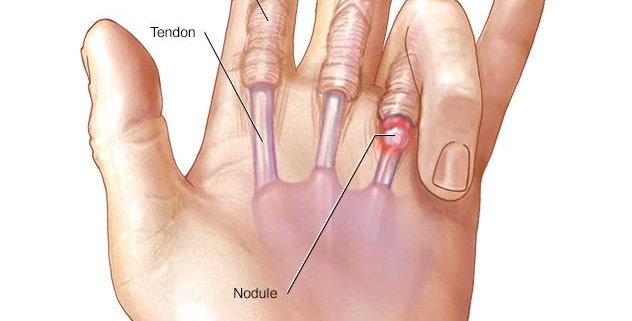
Trigger Finger
Overview
Trigger finger, also known as stenosing tenosynovitis, is a condition that affects the tendons in your fingers. It results in one or multiple fingers getting stuck in a bent position, triggering a snapping or clicking sensation when you try to straighten it. Sometimes, the finger might even feel locked in that position. It is a common condition, especially among women and people aged between 40 and 60.
Types
There are no specific types or subtypes of trigger finger, but the condition can occur in any of the fingers or thumb.
Causes
The exact cause of trigger finger is not known, but it’s linked to the narrowing of the space within the sheath surrounding the tendon in the affected finger. Factors that may increase the risk of developing trigger finger include:
– Age: It is more common in individuals aged 40 and above.
– Sex: Women are more at risk than men.
– Health conditions: Conditions like diabetes, rheumatoid arthritis, and gout can raise the chances of getting trigger finger.
– Occupations or activities: Tasks that require repetitive hand use or prolonged gripping, such as operating machinery, can increase the risk.
Symptoms
Symptoms of trigger finger can vary in severity. They may include:
– Finger stiffness, particularly in the morning.
– A popping or clicking sensation when moving the finger.
– Tenderness or a bump (nodule) at the base of the affected finger.
– Finger locking in a bent position, which suddenly pops straight.
– Finger unable to straighten from a bent position.
Diagnosis
Trigger finger diagnosis is based on medical history and a physical exam. There are no specific tests to diagnose trigger finger. A doctor or physiotherapist can usually diagnose it through an examination of the hand and by evaluating the symptoms.
Treatment Options
The treatment of trigger finger depends on the severity of the condition. Options can include:
- Resting and avoiding activities that require gripping.
– Wearing a splint to limit finger movement.
- Non-steroidal anti-inflammatory drugs (NSAIDs) or steroid injections to reduce inflammation.
– Exercises or physiotherapy.
– Surgery or a procedure called tenolysis may be suggested for severe cases.
Living With Trigger Finger
To manage trigger finger, you can:
- Rest the affected hand and avoid activities that make the symptoms worse.
– Apply ice or heat to the affected area.
– Take over-the-counter pain relievers to help manage the pain.
– Perform gentle exercises to maintain mobility in the finger.
– Follow the instructions for any prescribed medications or therapy exercises.
When to Seek Help
While trigger finger isn’t usually a serious condition, it’s important to seek medical evaluation and treatment if your finger or thumb gets stuck in a bent position, you experience pain, or your finger becomes inflamed. Your healthcare provider can guide you on the next steps for treatment. Do not attempt to force your finger to straighten as it could lead to further injury.
